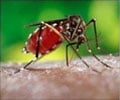- Filariasis - (https://en.wikipedia.org/wiki/Filariasis)
- Lymphatic Filariasis - (https://www.who.int/news-room/fact-sheets/detail/lymphatic-filariasis)
- Blood Lymphatic Disease - Filariasis - (https://www.nhp.gov.in/disease/blood-lymphatic/filariasis)
- Filariasis: Symptoms, Causes and Management - (https://www.aimu.us/2017/07/15/filariasis-symptoms-causes-and-management)
- Filaria - (https://www.sciencedirect.com/topics/immunology-and-microbiology/filaria)
- Parasites - Lymphatic Filariasis - (https://www.cdc.gov/parasites/lymphaticfilariasis/treatment.html)
- Filariasis - (https://rarediseases.org/rare-diseases/filariasis/)
About
Filariasis is a parasitic disease transmitted by blood-feeding arthropods, mainly black flies and mosquitoes.(1✔ ✔Trusted Source
Filariasis
Go to source)
There are eight different types of thread-like nematodes that cause filariasis. Most cases of filaria are caused by the parasite known as Wuchereria bancrofti.
Depending on the area which the worms affect, filariasis is classified as -
- Lymphatic filariasis (Elephantiasis) – which affects the lymphatic system, including the lymph nodes.
- Subcutaneous filariasis- which affects the subcutaneous layer of the skin.
- Serous cavity filariasis- which affects the serous cavity of the abdomen.(2✔ ✔Trusted Source
Lymphatic Filariasis
Go to source)
Filariasis is not a life-threatening infection but it can cause lasting damage to the lymphatic system. The disease causes no symptoms in the initial stage. Therefore, most people initially are not aware that they have filariasis. Lymphedema with thickening of the skin and underlying tissues is the classical symptom of filariasis.
Filariasis is usually diagnosed by direct demonstration of the parasite in the nocturnal blood sample or skin specimen.
While medicines like diethylcarbamazine (DEC) are available to treat filariasis, the gross swelling of the leg makes a person look noticeable and ugly. Hence, it is better to protect from the bites of filarial-spreading mosquitoes by using mosquito repellent creams, mats, coils, aerosols and prevent breeding of mosquitoes with better practice of hygiene and sanitation.










